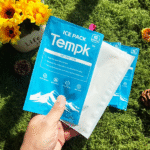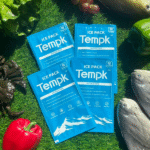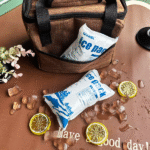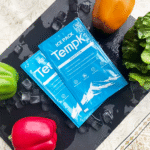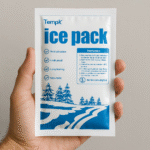Costo de la bolsa de hielo seco: 2025 Precios, Normas & ROI
Elegir el derecho costo de la bolsa de hielo seco en 2025 Reduce directamente el costo total en destino al mismo tiempo que protege la calidad del producto.. Verá precios reales por libra, recargos típicos, y reglas de tamaño adecuado que puedes copiar hoy. En inglés sencillo, mostramos las matemáticas, cuando cambiar a paquetes de gel, y cómo etiquetar correctamente los envíos por vía aérea y terrestre.. También recibirá una mini calculadora y una lista de verificación rápida para aplicar en su próximo envío..
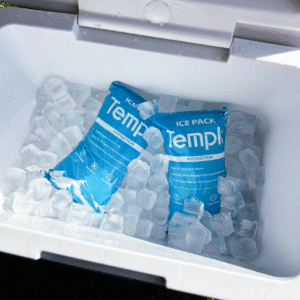
-
Cómo dimensionar un costo de la bolsa de hielo seco para carriles de 24 a 120 horas sin gastar demasiado
-
Cual 2025 Los recargos y las reglas son más importantes para su costo de la bolsa de hielo seco
-
Cuando los PCM vencieron a un costo de la bolsa de hielo seco para carga “no congelar” entre 0 y 8 °C
-
Cómo combinar registradores de datos y opciones de aislamiento para reducir el costo total
¿Qué impulsa el costo de la bolsa de hielo seco? 2025?
Respuesta directa: Precio por libra, Tarifas de hielo seco para transportistas, valor R de aislamiento, calor ambiental, y el riesgo de fracaso son las grandes palancas. El hielo seco al por menor suele llegar entre $1.60 y $3.00 por libra, y muchos servicios aéreos añaden alrededor de un $8 tarifa de hielo seco por paquete. Planifique alrededor de un 5–10 libras por día rango de sublimación y aislamiento mejorado donde es más barato que enviar peso adicional. Estas cifras sintetizan los datos de campo actuales y la orientación del operador..
cost_dry_ice_ice_pack
Por qué te importa: Piense en el calor como agua que se filtra en un balde.. Un mejor aislamiento reduce la fuga, Entonces compras menos hielo para el mismo carril.. Si envía productos congelados durante 2 o 3 días, empezar cerca 5 lb/día en transportadores de EPS ajustados y de 8 a 10 lb/día en corrugados delgados. Los niveles de proveedores hacen bajar el precio unitario a medida que se compra más; Únase a un vecino para hacer un pedido de 100 libras y reducir la tarifa por libra.
¿Cuánto hielo seco por día para los carriles congelados comunes??
Para transportistas medianos, un rango práctico es 5–10 lb por 24 horas. Utilice el extremo inferior para contenedores EPS o VIP densos, y la gama alta para paredes delgadas o rutas calientes. Registre una carrera por carril con un registrador de datos; Sabrás si puedes recortar el hielo o si necesitas un amortiguador para las olas de calor..
| Longitud del carril | Libras base/día | Cuando usar | Lo que significa para ti |
|---|---|---|---|
| 24 h, EPS/VIP | 5 | Rutas suaves, ajuste apretado | Masa más baja, menor peso de carga |
| 48–72 h, EPS | 6–7 | La mayoría de los alimentos congelados. | Equilibrar peso y margen |
| 72–96 h, acanalado | 8–10 | veranos calurosos, paredes delgadas | Considere un mejor aislamiento sobre más hielo |
Consejos prácticos y sugerencias.
-
carriles calientes: Precongelar la carga útil y agregar un 20–30% buffer.
-
Carriles largos: Divida el hielo a lo largo de las paredes y la tapa para reducir los puntos calientes.
-
Ultracongelado: Utilice hielo seco para ≤ - 50 ° C especificaciones; Los PCM por sí solos no lo aguantarán.
-
Validación: Ejecute una prueba del registrador de datos para cada carril y costo de la bolsa de hielo seco tamaño.
Caso real: Una panadería de la costa oeste reemplazó los geles por un 6 Bolsa de hielo seco con costo en libras. en un enfriador de EPS para aire de dos días y reducir las reclamaciones ~30 % sin aumento de la tarifa base.
¿Cómo se calcula el tamaño de una bolsa de hielo seco sin gastar de más??
Respuesta corta: Utilice un estimador repetible y valídelo con una prueba cronometrada. Un atajo popular para carriles congelados es peso de carga útil × 0.6 × días de tránsito. Verifique con el 5–10 lb/día heurística y ajuste +20–30% para olas de calor o corrugado fino.
Ejemplos resueltos para un presupuesto rápido
Ejemplo A (2aire diurno, EPS): 6 libras × $1.80 = $10.80 hielo + ~$8 tarifa de hielo seco + $3 materiales ≈ $21.80–$23,80.
Ejemplo B (4- Día de tierra, acanalado): 18 libras × $1.60 = $28.80 hielo + $0–$8 tarifa + $3.50 materiales ≈ $32.30–$40.30.
Ejemplo C (3aire diurno, ruta caliente): 29 libras × $2.20 = $63.80 + ~$8 tarifa + $3.50 ≈ $75.30; mejorar el aislamiento probablemente sea más barato.
Paquetes de hielo seco versus gel: ¿Cuándo cuesta una bolsa de hielo seco la mejor opción??
Regla general: Elija hielo seco para ≤ - 18 ° C objetivos o carriles más largos; elegir PCM/gel para 0–8 ° C Productos “no congelar”. El hielo seco es de un solo uso pero potente; Los geles son reutilizables y evitan tarifas de materiales peligrosos.. Paquetes híbridos usa un pequeño costo de la bolsa de hielo seco más PCM para pasar de congelado a refrigerado en un plazo de 3 a 5 días.
| Método de enfriamiento | Costo unitario típico | Reutilizar | Carga regulatoria | El mejor ajuste |
|---|---|---|---|---|
| hielo seco | $1.60–$3.00 por libra | De uso único | Clase 9 etiqueta, desfogue, UN1845 | Mantener los productos ≤−18°C |
| Gel | $2–$5 por paquete | Reutilizable | Sin materiales peligrosos para la mayoría de los carriles | Mantener entre 0 y 8 °C o complementar con hielo seco. |
Etiquetado y seguridad a cualquier coste bolsa de hielo seco
Haz esto cada vez: Los envíos aéreos deben estar ventilados y marcados como "Dióxido de carbono, sólido,” con UN1845 y kg netos, más una clase 9 etiqueta. Dejar 10–15% de espacio libre. CO₂ se expande ~541 litros por kilogramo; nunca sellar herméticamente. Un SOP de una página con fotografías evita retrasos y cargos por reetiquetado.
-
Marca Hielo seco / Dióxido de carbono, sólido.
-
Agregar UN1845 y peso neto en kg (p.ej., 6.0 kilos).
-
Aplicar Clase 9 etiqueta en un lado vertical.
-
Usar ventilado embalaje; nunca tape las rejillas de ventilación.
Autocomprobación rápida
-
Validamos al menos un carril con un registrador de datos..
-
Documentamos UN1845 y kg netos en cada caja de aire..
-
nos vamos 10–15% espacio de cabeza en cada caja.
-
Tenemos una alternativa PCM a un costo de la bolsa de hielo seco para carriles de 0 a 8 °C.
-
Renegociamos trimestralmente los niveles de hielo seco.
2025 Tendencias que cambian el coste de la bolsa de hielo seco.
Qué hay de nuevo: Espere precios estables por libra con cambios regionales, modestos aumentos en las tarifas del operador, y mejor tecnología de aislamiento/monitoreo. Los generadores portátiles de hielo seco y los transatlánticos VIP más ligeros reducen los costes de transporte. Manteniendo ambos un costo de la bolsa de hielo seco y un paquete PCM validado le permite cambiar cuando el clima o el precio cambian.
Últimas actualizaciones de un vistazo
-
Tarifas de transportista: Muchos EE.UU.. Los servicios aéreos aplican tarifas de manejo de hielo seco alrededor de $8 por paquete.
-
Suministrar: La disponibilidad de CO₂ puede reducirse a nivel local; mantener dos proveedores.
-
Técnico: Los registradores de datos en la nube más baratos hacen validación de carril trimestral fácil.
-
Materiales: Nuevo Revestimiento VIP Reducir la masa de hielo sin perjudicar el tiempo de retención..
Insight del mercado: Modelo dos paquetes por carril y negociar términos de recargo anualmente. Cuando los costos de la energía aumentan o llegan las olas de calor, cambiar a un embalaje con mayor R a menudo supera el envío de otras 5 a 10 libras por día de un costo de la bolsa de hielo seco.
Preguntas frecuentes
¿Qué incluye una bolsa de hielo seco con costo??
Significa la masa de hielo., tarifa del transportista, materiales, mano de obra, y costo de riesgo esperado: use los cinco para comparar opciones.
¿Es peligroso el hielo seco??
Sí. Está regulado en el transporte aéreo.; Los paquetes deben ventilarse y estar etiquetados.. Formar al personal y medir el CO₂ en las zonas de preparación.
¿Cuánto espacio de cabeza necesito??
Apuntar 10–15% liberar volumen y mantener las rejillas de ventilación abiertas; El CO₂ se expande rápidamente a medida que el hielo se sublima.
¿Puedo enviar hielo seco por tierra sin documentación sobre materiales peligrosos??
Con mercancías no peligrosas, normalmente necesita etiquetas y ventilación adecuadas, no es una declaración completa de materiales peligrosos. Confirma tu guía de transportista.
¿Cuántas libras por día debo planificar??
Comenzar con 5–10 lb por 24 horas y validar con un registrador en sus propios carriles.
Resumen y recomendaciones
Puntos clave: Su costo de la bolsa de hielo seco está impulsado por el precio por libra, tarifas del transportista, aislamiento, calor ambiental, y riesgo. Tamaño adecuado con cálculos sencillos, etiqueta correctamente, dejar el espacio de cabeza, y mantener una opción PCM para carriles refrigerados. Valide con un registrador de datos y revise los niveles con los proveedores una vez por trimestre..
Siguientes pasos: Ejecute el estimador para sus cinco carriles principales, luego prueba A/B de aislamiento frente a masa de hielo. Actualice su SOP de etiquetado y programe una validación de carril trimestral. CTA: Comuníquese con Tempk para obtener un modelo de costo y paquete carril por carril.
Acerca de Tempk
Diseñamos empaques validados de hielo seco y PCM, cargadores aislados, y etiquetado de los POE. Ayudamos a la comida, farmacéutico, y los equipos de biotecnología redujeron las reclamaciones 20–40% y reducir el costo de descarga en 10–25% dimensionando correctamente el refrigerante y mejorando el aislamiento.

















